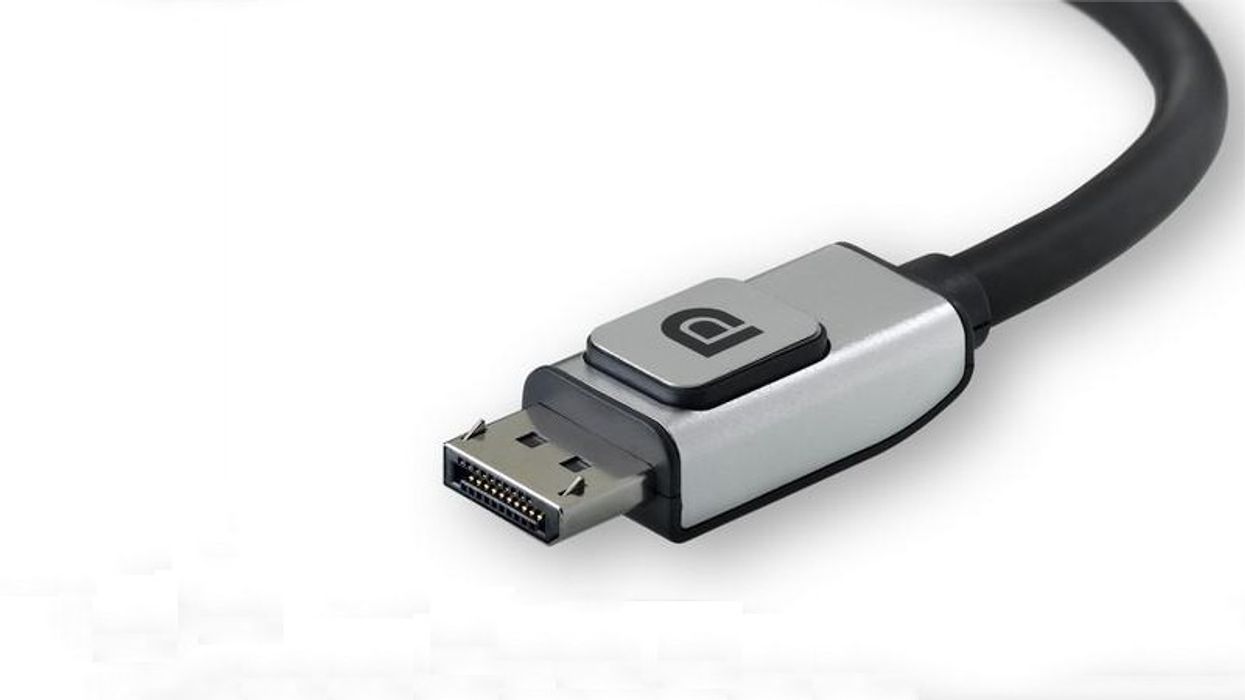DisplayPort 2 Is on Its Way and Will Future-Proof Your 8K Workflows
New display standard promises up to 80 Gbps bandwidth and multi-monitor support for 8K, or a single monitor in 16K, and in HDR.

The Video Electronics Standards Association (VESA) announced the DisplayPort 2 spec last week, making it the most significant update to the PC display connection since its introduction in 2006. The updated DP2 standard more than doubles the actual bandwidth of DP1.4, which maxes out at 32.40 GBps on a single cable. In addition, DisplayPort 2 also supports 30-bit color, which will offer over a billion different colors and shades. On paper, it sounds like a pretty worthy advance that is long overdue.
With the new DisplayPort 2 spec, editors will also be able to push up to 80GB per second of 8K HDR video, supporting two 8K displays running at 120Hz, or a single 16K HDR screen (when that exists) at 60Hz on a single cable. That also translates into three monitors running 10K. That's sure to make the next generation of post-production teams happy as they look at an 8K future and beyond.
VESA Board Vice Chairman Syed Athar Hussain says:
“DP 2.0 offers differentiated end-to-end user experiences, across a multitude of market segments, such as productivity and gaming, as well as wider end-to-end interoperability with various connectivity options. It sets a new paradigm for display interface specifications by providing scalability from power-efficient small form-factor displays, to high-resolution and high-refresh-rate large form-factor displays."
Tech Specs
- Single display resolutions: one 16K (15360×8460) display @60Hz and 30 bpp 4:4:4 HDR (with DSC) or one 10K (10240×4320) display @60Hz and 24 bpp 4:4:4 (no compression)
- Dual display resolutions: two 8K (7680×4320) displays @120Hz and 30 bpp 4:4:4 HDR (with DSC) or two 4K (3840×2160) displays @144Hz and 24 bpp 4:4:4 (no compression)
- Triple display resolutions: three 10K (10240×4320) displays @60Hz and 30 bpp 4:4:4 HDR (with DSC) or three 4K (3840×2160) displays @90Hz and 30 bpp 4:4:4 HDR (no compression)
And here's the great irony. VESA must've really looked over the horizon when designing the DisplayPort 1.4 standard, because the actual hardware plug for DP2 remains the same, with all the changes coming in the form of circuitry beyond the cable. That also means that DP2 will be backwards compatible with previous DisplayPort standards.
How does VESA accomplish this? Simply by re-tasking the four existing Thunderbolt 3 connections that are built into the DisplayPort standard. Thunderbolt 3 is capable of only 40GB per second because it's bidirectional in its communication. This translates into half the connections are accepting inbound communications, while the other half is talking outbound. But through DisplayPort 2, all four TB3 connections are one-directional to the monitors, doubling the bandwidth it can transmit.
The USB Type-C monitor connections can also benefit from the same bandwidth increase and HDR support through "DisplayPort Alt Mode," which can handle the same capacities with both audio and video signals. There is also support for visually lossless Display Stream Compression (DSC) and Forward Error Correction (FEC), as well as HDR metadata transport and other advanced features.
The first display products incorporating DP 2.0 are projected to hit the PC market by late 2020. For more information, visit VESA.












